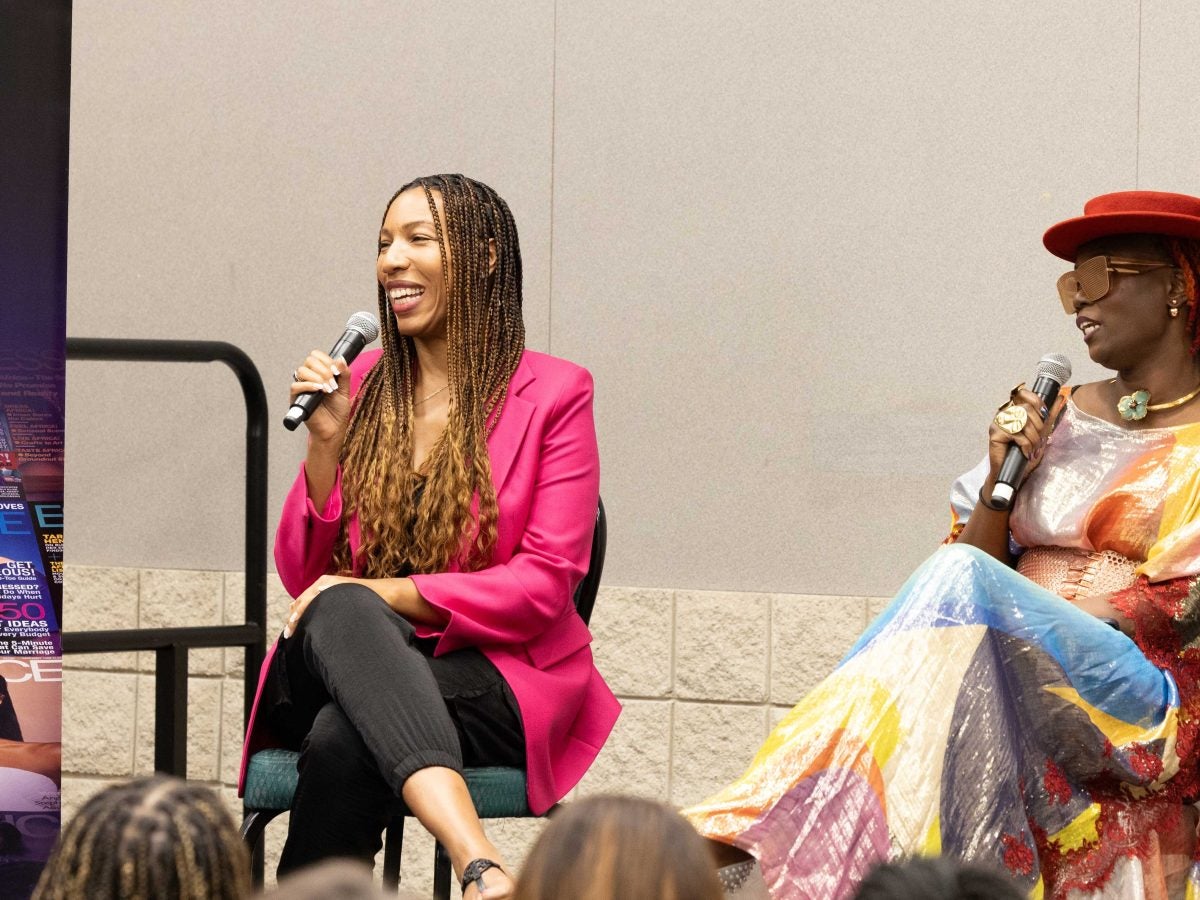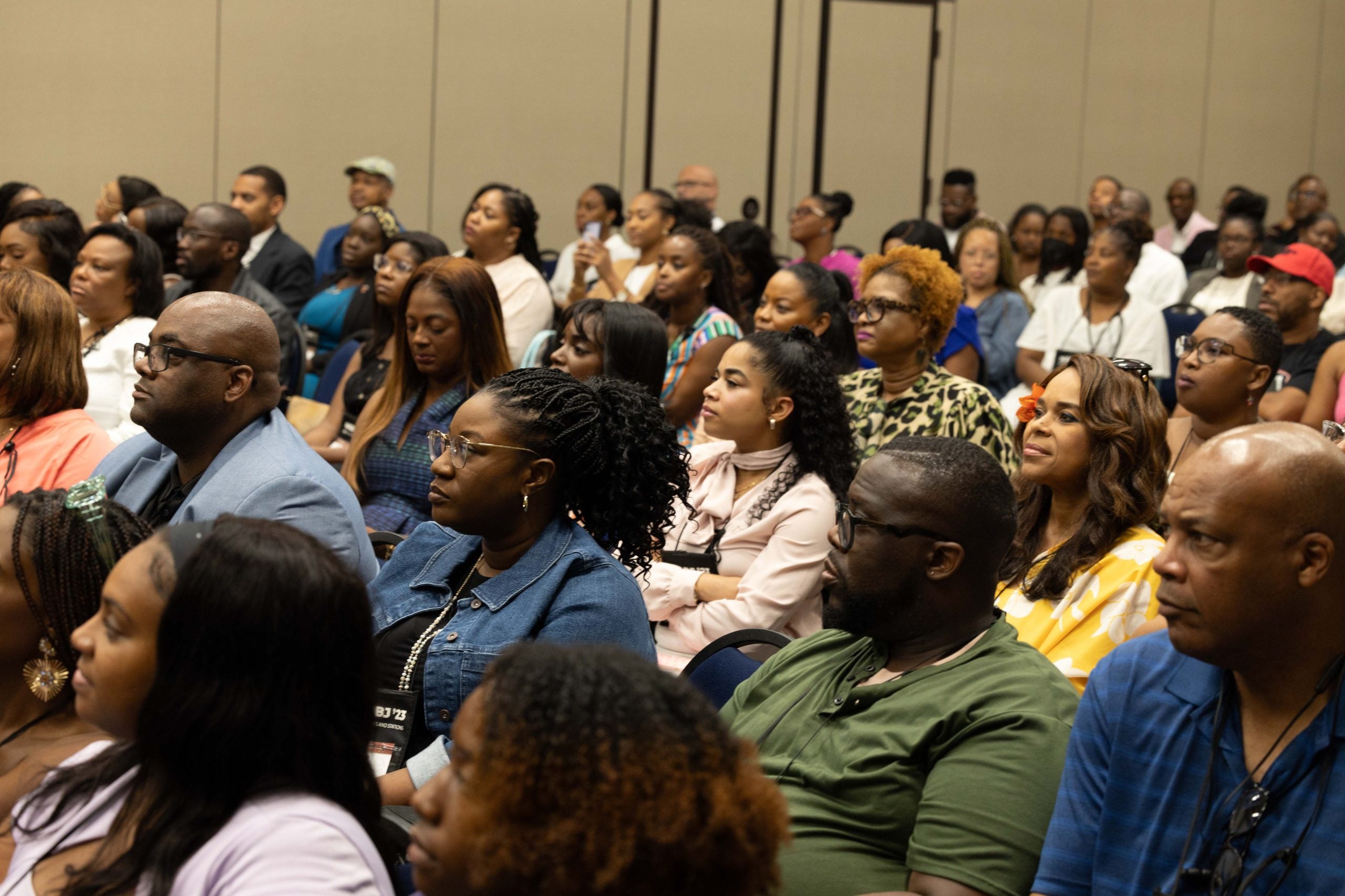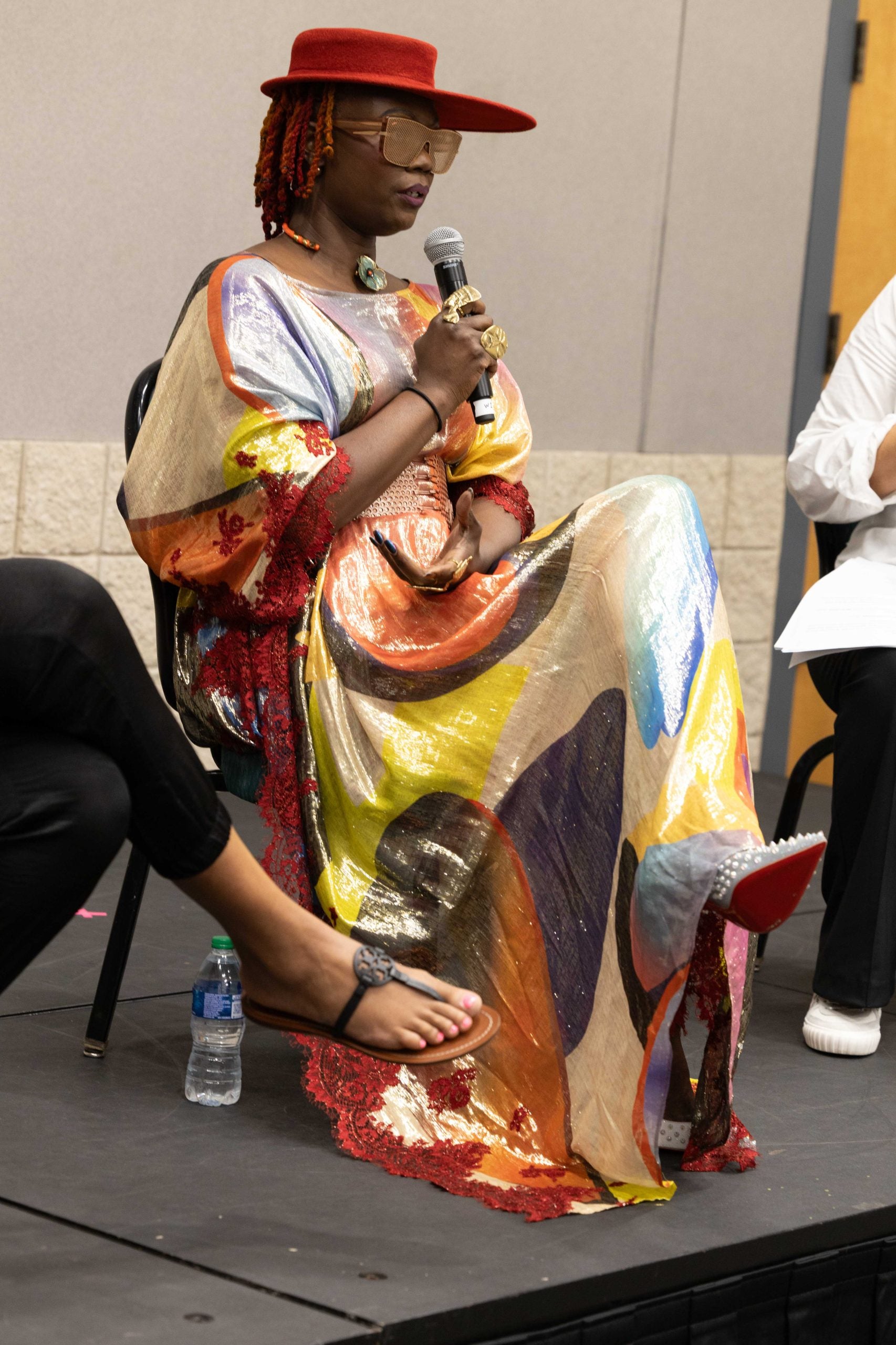
On the third floor of Alabama’s Birmingham-Jefferson Convention Center, a buzzing mass of Black journalists filed into a packed room for a conversation about Time of Essence, the Oprah Winfrey Network‘s forthcoming original docu-series celebrating ESSENCE magazine’s 50-year legacy.
In a city molded by its rich civil rights history, Birmingham hosted over 3,600 attendees this weekend from across the country for five days of professional development programming, a career fair, cultural immersion opportunities, and networking. The panel and advanced screening were a part of Saturday’s programming for the National Association of Black Journalists (NABJ) Convention.
The discussion led by CNN anchor Sara Sidner, ESSENCE Ventures CEO & President Caroline Wanga, and OWN Director of Programming Kai Bowe unveiled the ideation process for the star-studded, five-part series debuting on OWN and Max on August 18th.
Each episode of the docu-series unravels a decade of ESSENCE covers and cultural moments, spotlighting stars like Whoopi Goldberg, Halle Berry, Iman, Sheryl Lee Ralph, and Boris Kodjoe. In interviews with ESSENCE leadership including; former Editor-In-chief Susan Taylor, Beauty and Cover Director Mikki Taylor, and Wanga, audiences are offered clarity on the decision-making process behind ESSENCE’s most popular and controversial stories. “When you watch the documentary you’ll understand some of the work we need to do. To understand that we need to include the full spectrum of Blackness. We need to create a multi-generational model that has room for everybody,” said Wanga. At the center of the project, she detailed, is an analysis of critical inflection points for the publication in which their audience or non-Black critics questioned the idols they chose to spotlight or the need for a magazine serving Black women.

Against the backdrop of the civil rights and women’s rights movements, ESSENCE magazine debuted in May of 1970 offering a refreshing glimpse into the lives of Black women with stories examining politics, affirming beauty, and providing insight on subjects like love and marriage. The magazine continued to drive forward hard conversations in the decades to follow.
“Sometimes we can take it for granted, but it was such an uphill battle for them because anyone who grew up in the 70s and earlier,” said Bowe. “There was no black advertising. There weren’t black women and black families being represented. So, that’s one of the things that we get to talk about.”
Among the most notable pages was former Editor-In-Chief Susan L. Taylor’s column “In The Spirit,” in which she wrote about the love, heartbreak, and backlash like the controversy around the first Black Miss America winner and now-world-famous actress Vanessa Williams after a nude-photo leak rocked her career. The magazine would also cover the politicized harm faced by the black community after Hurricane Katrina, the election of the first Black President and Vice President of The United States, and the Black Lives Matter movement.
Wanga acknowledged the recent backlash the publication has faced using examples like the cover highlighting actress Niecy Nash and her wife Jessica Betts drawing backlash from anti-LGBTQ groups. She also made note of hateful messages directed toward Lori Harvey and Megan Thee Stallion for not being, what some readers described as “not an ESSENCE woman” after the women were featured in the magazine and at the publication’s annual ESSENCE festival.
Hatred, siloing, and stigmatization are all challenges the CEO says the brand will continue to confront as conversations about sexuality and self-expression permeate popular culture.
“I will not apologize for the work that we’re doing to ensure that the full spectrum of blackness that we’ve worked so hard to get permission for can live freely and doesn’t feel excluded,” Wanga said. “There are times when you may not like what it is, just don’t come. But you’re still welcome whenever you find the thing that works for you.”
Around the room, some attendees shed tears asking questions about the challenges faced by Black women seeking to define themselves in a world where they often feel silenced or witness attacks against their peers.
When asked by a conference attendee why the documentary includes the voices of prominent Black actors, Wanga reminded audiences that four Black men, Edward Lewis, Clarence O. Smith, Cecil Hollingsworth, and Jonathan Blount, founded the magazine.

“What four Black men decided to do because they had the aperture because they had the access because they had the societal power to do so, was one of the greatest acts of love between black men and women. There are plenty of Black men that have been a part of the ESSENCE story,” she said.
Wanga and Bowe expressed their hopes that audiences would bring together all members of their family, of all ages and genders, to watch the film in August.
“It’s a watch party type of thing, it really is, because you’re gonna want to reminisce and get your folks together. The whole family can watch at the same time, we promise that you will be so happy that you did,” Bowe said.
